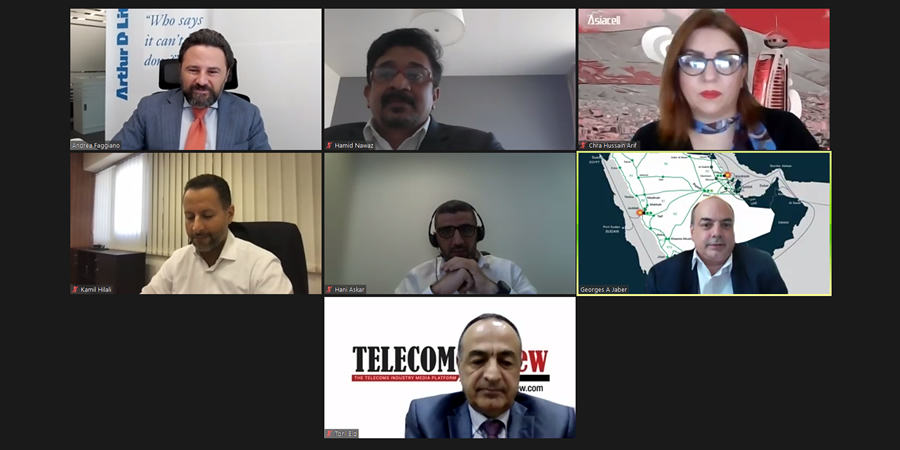In a segment of its latest virtual panel on September 13, powered by SES and entitled “Revolutionizing connectivity through innovation”, Telecom Review drove the speakers to think about the future.
Moderator Andrea Faggiano, partner, telecom, information, media & electronics practice lead, Arthur D. Little Middle East, addressed the speakers with a question on what is the innovation or trend that they think will really shape the connectivity industry.
Hani Askar, general manager global, Batelco, said, “Speed, latency, and high capacity are always the challenge no matter the technology coming later. It is always the question of these three and this is exactly what we’re seeing giving the example of 5G. It is just 4G with higher capacity and more speed, 6G will be even faster, and it keeps on rolling.”
He added, “The business model is also the driver for the success of any new technology where there is no constraints.”
Chra Hussain Arif, chief commercial officer, Asiacell Iraq, stated, “In my opinion, intelligent connectivity is a must: artificial intelligence is a trend to look at, as well as cognitive capabilities. I also expect real-time analytics to be very important to the edge as we need data analytics to complete IT solutions. Not to forget that cybersecurity is a must for every industry especially in telecoms because it englobes more connections to partners.”
Kamil Hilali, chief strategy officer, Zain Group agreed with the speakers and also added that “in the next few years, we’re going to see in the region more enhanced capacity submarine cables. In addition, we are going to see a lot of new routes providing low latency, a lot of edge networks and localization of content and not to forget the software-defined networks which are going to provide flexibility, real-time network management and low cost.”
Hamid Nawaz, general manager, Middle East & Central Asia, SES commented, “What we are envisioning is that there will be a universality of broadband. Truly global high speed connectivity should become a reality, both terrestrial and satcom advancements. Plus, the focus of investment will move from US to Asia, Middle East and Africa where nearly 7 billion people are living. There will be global, wider options of new connectivity solutions, and big cloud/tech companies such as Amazon, Google, Facebook, Microsoft, Apple will play a major role in the connectivity domain. Companies will need to transform their businesses to address the highly disruptive challenging and evolving market. What the satellite industry and SES are doing is investing, building, acquiring, and partnering for the right capabilities that will allow us to control our combined destiny in the future.”










